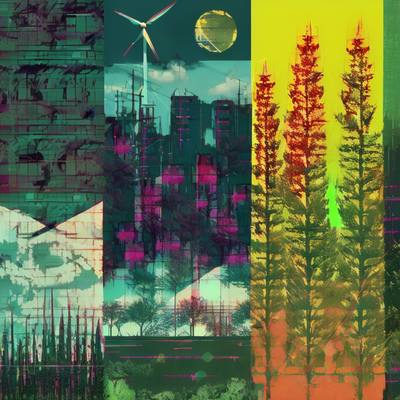I am also interested in any experiences, especially regarding the computers you can attach to these small displays. I often see RPi as an option, but I heared about RocketChip, too. What are the best platforms to drive these displays?
- 1 Post
- 32 Comments
We learned the hard way that on a RPi4 you want a very good SD card if you are running nextcloud on it.
Why is it stagnant?
For my my father I only have to make sure it looks not so different after each major upgrade. I have to be careful when there are new things, but apart from that he can do everything for himself except these major upgrades and backups.
So, he is happy with Fedora and Gnome classic.
ghostcript can add a color profile, too. I use the regular ISO coated v2 (without the 300%). This is just a step to not do all things in Scribus by hand and make sure colors are not out of gamut.
I don’t now the command line from the top of my head. Just ping me again, so when I am on my computer I can send the complete ghostscript cli line that currently works for me.
The final profile is set up by Scribus, where I have set it to the ISO coated with 300%. Ideally I would like to have less steps in the chain, so that a change in the Inkscape-source involves less manually steps. One can dream of it. (:
I basically use it only for mail, although I have set up my calender there, too. The evolution-data-server makes it possible to access the calender entries using gnome-calender which has a modern gui.
You can still accept email invites in evolution and see them in gnome-calendar. It works very well with my radical server.
And second bonus, it integrates your dates with gnome-shell. Just disable notifications in evolution to don’t get them twice. (:
Evolution.
I have used Thunderbird a lot, but finally decided to go back to Evolution 2 years ago.
I am actually producing PDF/X-4 print-ready stuff with Inkscape, ghostscript and Scribus. I even have TrimBoxes and proper CMYK.
But it involves many manual steps, especially overprinting for the K color channel does not work and I need to adjust every polygon and vectorized text manually.
I whish it would be possible all in one tool. I can afford the time, because it is only a hobby. If it would be professional the extra steps involved make it not good enough.
Yeah, Debian for services/servers (Raspberry Pi in my case) and Gentoo on the desktop.
But for the not tech-savy family members I’ve choosen Fedora for them. They need more GUI.
Nowadays busy with making my useflags compatible with bin-packages to reduce time to update.
I am curious, though how adoption of this new feature is.


Subjectively, I think, KDE/Plasma would make me unproductive compared to Gnome, maybe not as much as being on Win11 for sure. Both are cluttered and distracting from my point of view.
I am looking forward to niri, because I realized that GTK is the real king that makes Gnome so awesome to use. Niri would make window management even better. (:
A word on new Linux users: I have seen most prefering Gnome, older people tend to prefer the Gnome classic, because they are used to the idea to see which programs are currently running (taskbar). And this makes it easier for me to help them, because it still behaves like a modern desktop.
The KDE/Plasma/XFCE/Cinamon users around me are all long time Linux users. They made a dicision for themselves and know how to use it.


Clearly, Gnome is the most modern looking of the three.
Nothing is graceful about Windows. [=
Gentoo for my workstation because I need flexibility, security and stability there and Debian stable for my Raspberries running all the services I need 24/7 access to.
I don’t like all the spin-offs of the major distros. And no, Ubuntu is not a major distro it is based on Debian and they are known for some really bad decisions in past and present, eg: snap instead of flatpak.


I just wait until my monitor goes into powersave mode [=
I even noticed that Win11 is slower on more modern hardware. <_<
This looks a bit like borgbackup. It is also versioned and stores everything deduplicated, supports encryption and can be mounted using fuse.


I have used
xss-lockwithi3lockin the past with success. It makes sure that systemd-logind notifies over dbus when entering hibernation so thatxss-lockstarts the configured lockscreen.Before that I had a script which locks manually and then calls
systemctl hibernate.Currently I am on Gnome, but I want to transition back to a more minimalistic DE like niri. Then I have to look on the options again to reliably lock my screen.
Since my question, Gentoo has changed in a favourable way. Guess what, I did not have the time to switch somewhere else. Enabling the binary repository for my existing Gentoo install was easy.
Once again I have zero complaints and I can stay on Gentoo. Updates don’t take ages anymore. (:
Finally I found the time to write down, how I use Ghostscript:
gs \ -sDEVICE=pdfwrite \ -o /output/gs_file.pdf \ -dPDFSETTINGS=/prepress \ -sProcessColorModel=DeviceCMYK \ -sDefaultCMYKProfile=/path/to/ISOcoated_v2_eci.icc \ -sColorConversionStrategy=CMYK \ source/file.pdf \ -fI don’t now which of
ProcessColorModelorColorConversionStrategyis the important one. I kept both and did not bother to try to omit one of them.-dPDFSETTINGS=/prepressmakes sure that embedded bitmaps are in 300dpi and I think-fprevents Ghostscript staying in interactive mode after all pages have been finished.